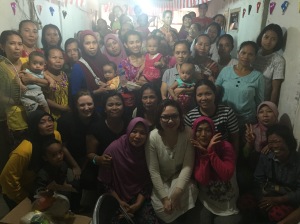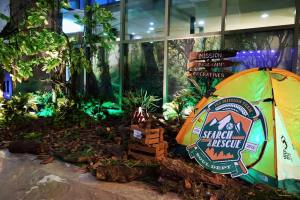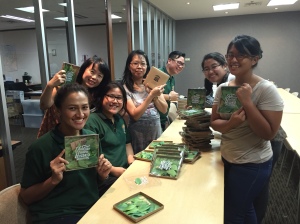We all have those friends. Those people who always think they know more than we do and always have to be right. Those people who it’s their way or the highway—either we go where they want to go and do what they want to do, or they will find someone else to do it with and ditch you. Most of us would probably agree that those kinds of people are really annoying and not true friends.
Yet though we acknowledge those behaviors as bad in terms of friendship, often those very same attitudes are what guide our development. We may not look at it that way, but often those kinds of attitudes are what drive the particular projects or programs we offer in communities.
We believe that our education and exposure to the world makes us somehow more “qualified”—so we feel justified in coming in and telling a community everything they are doing wrong and what they should do to fix it.
We feel like we have something valuable to contribute, so we jump right in, feet first ready to bring a solution. Often, as Westerners we mistake Asian hospitality and respect as them agreeing with us. Just because they are not rude like an American would be for you making assumptions about them does not mean that they believe that the project you want to implement is best for them. Instead of building mutual respect and trust, you’ve become that rude friend that always has to be right.
It’s not that the communities do not have problems—we all have problems. The issue is not the community problems; it is the attitude of those of us who want to serve those communities. So how do we get to a place where we can deal with the problems and have a good (and respectful) attitude? I think we can do this through this thing called “community assessments.”
I don’t know about you, but the term “community assessment” can be a bit scary. I mean, first of all, where do we even start? The issues the community faces can see so overwhelming it is hard to narrow the focus? Also, what if you do the survey and you find out that the problems the community identifies are not the problems you think are the most important? Or even worse, what if the problems they identify are beyond the scope of what my organization can do and then you have to tell them you can’t help after all?
I think the problem with those assumptions is that it is a wrong view of community assessment. Community assessments really are a tool to help us build better relationships with the community. They help us learn to listen to their hopes, their dreams, their expectations, and even the challenges that they face. The community assessment takes the problems from paper and gives them names and faces. It reminds us that those we are serving are real people, real souls. But if you want to move your organization from caring about projects to caring about people—using a community assessment as a guided process is a great place to start.
Some people don’t need a community assessment to get to know people in a community. I am not one of those people. I am a tad awkward. I hate large group gatherings where I don’t have a specific task or role. For me, community assessments give me a reason to talk to women in the community one-on-one and begin to build relationships with them. One of the moms I talked to for the community assessment invited me into her home the next time I was there. It broke the ice between them and me.
Yes, assessments are hard, they take time, and sometimes the tangible results don’t feel like they are helpful. But we should do them anyway. Why? Because people are valuable. Because they are worthy of our time. Because they have a voice and they should be heard.
If we want community development to be a tool for evangelism, then we need to stop bulldozing our opinions and ideas about communities and begin to listen to them. As we build relationships we earn the right to be heard and can have the future opportunities to share our faith through relationships.
People are more important than projects. Projects are there to facilitate the growth and development of people, but they should never be the end goal. The end goal should be people being transformed into the image of Christ and them leading healthy and productive lives—physically and spiritually.

 As I was doing research for a paper I am working on for grad school, I came across some startling statistics about Indonesia. Did you know that according to the World Bank, ONE IN THREE CHILDREN in Indonesia is severely malnourished and will be permanently stunted? When a child is stunted it means that their physical bodies and their brains will never fully develop. Can you imagine receiving so few nutrients that your hair cannot properly pigment? That from year to year in school you can hardly learn anything new because your brain is not developing properly? All because you do not have enough nutrients….
As I was doing research for a paper I am working on for grad school, I came across some startling statistics about Indonesia. Did you know that according to the World Bank, ONE IN THREE CHILDREN in Indonesia is severely malnourished and will be permanently stunted? When a child is stunted it means that their physical bodies and their brains will never fully develop. Can you imagine receiving so few nutrients that your hair cannot properly pigment? That from year to year in school you can hardly learn anything new because your brain is not developing properly? All because you do not have enough nutrients….

















